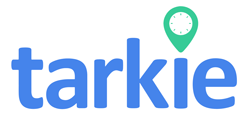How can your business tackle the complex world of payroll compliance? It’s important to keep employees happy and avoid legal trouble. In the Philippines, linking attendance systems with payroll is a big challenge for many companies.
As businesses try to follow HR laws and labor rules, this integration is key. It helps them stay on the right side of the law and work more efficiently. By tackling these issues, companies can improve their operations, protect employee rights, and manage payrolls accurately.
With the right approach, making attendance and payroll work together smoothly is possible. This benefits everyone involved.
Key Takeaways
- Effective attendance integration with payroll systems is essential for accurate compensation.
- Understanding HR laws and labor rules can help prevent significant penalties.
- Automated payroll calculations can minimize the risk of errors.
- Investing in compliance management software simplifies navigating regulatory changes.
- Regular updates to payroll systems are crucial for managing evolving tax regulations.
- Integrating automated systems can enhance accuracy in time tracking for employees.
- Those in charge of payroll must be vigilant to uphold employee rights and compliance standards.
Introduction to Payroll Compliance in the Philippines
For businesses in the Philippines, knowing about payroll compliance is key. The country’s labor laws have strict statutory requirements for how employees are paid and what benefits they get. If companies don’t follow these employment regulations, they could face big penalties. The Philippine Payroll Compliance Act gives clear rules, like how to handle taxes, employee benefits, and what reports to file.
In the Philippines, the standard workweek is 40 hours. Workers get overtime pay, which is at least 25% more than their regular pay for extra hours. Night shift workers also get a pay boost, at least 10% more than their regular pay. Plus, employees get a weekly break of at least 24 hours.
Compliance also means knowing about employee benefits. For example, the 13th-month salary is at least 1/12 of what an employee makes in a year. It must be given out by December 24. After a year of work, employees get five days off for Service Incentive Leave. Employers also have to give paid leave for holidays and personal reasons, like maternity leave.
In short, keeping up with Philippine labor laws is crucial for good payroll compliance. Ignoring statutory requirements can lead to fines and harm a company’s image and employee happiness.
| Regulation | Description |
|---|---|
| Overtime Pay | 125% of regular rate for hours beyond 40, 200% on regular holidays |
| Night Shift Differential | At least 10% of regular hourly wage |
| 13th-Month Pay | Paid by December 24, equivalent to 1/12 of basic salary |
| Service Incentive Leave | 5 days after one year of service |
| Mandatory Paid Leaves | Maternity (105 days), Paternity (7 days), Solo Parent Leave (7 days) |
The Importance of Attendance and Payroll Integration
In today’s fast-paced world, attendance integration with payroll systems is key for businesses, like those in the Philippines. It ensures employees get paid right for their work hours, including overtime and leave. Without it, companies might lose billions due to time theft.
Also, wrong attendance records can cause big payroll mistakes. Around 80% of timesheets need fixes, showing the need for automated systems. Accurate records mean timely pay and happier employees, which lowers turnover and costs.
Automated attendance systems help meet local labor laws on overtime. They cut down errors and provide a clear audit trail. Regular checks can spot issues, avoiding fines and keeping operations smooth.
HR teams gain a lot from linking attendance and payroll. They save 30% on monitoring time and see a 25% jump in employee satisfaction. Businesses that use these systems can see a 150% return on investment in the first year, thanks to better compliance and less work.
| Benefit | Impact |
|---|---|
| Reduction in payroll errors | 44% decrease in error rates |
| Improved employee satisfaction | 25% increase |
| Compliance monitoring efficiency | 30% less time spent |
| Return on investment | 150% in the first year |
In short, linking attendance and payroll systems is crucial for better employee satisfaction and smooth payroll. Companies that do this are set for better productivity and less risk.
Common Compliance Challenges in Payroll Processing
Businesses face many challenges in payroll processing. It’s important to understand the rules to keep things legal and make employees happy. Companies must follow HR laws and labor rules for things like wages, deductions, and benefits.
Knowing these rules helps businesses run smoothly and avoid problems.
Understanding Payroll Compliance Requirements
Compliance challenges come from many laws at different levels. For example, 76% of businesses struggle with minimum wage and overtime. Inaccurate tax withholding leads to 30% of fines.
Businesses must keep up with HR laws and local rules to avoid big fines. They also need systems to track employee leaves and absences. Over 50% of businesses don’t have these systems.
The Role of HR Laws and Labor Rules in Payroll
HR laws and labor rules shape how payroll works. For example, paying payroll taxes on time can save $3,000 a year. Keeping records for at least three years is key for compliance.
Regular audits help spot problems with employee classification and records. This is a big issue in 20% of audits. Payroll errors affect 40% of operations, leading to disputes over pay. Using timekeeping software can help solve these problems.
Keeping Up with Changing Tax Laws and Regulations
In today’s fast-paced world, keeping up with tax rules is tough for many businesses. Changes in tax laws add complexity, making it crucial to stay informed to avoid fines. It’s vital for companies to be proactive in tax compliance to protect their finances and build trust with employees.
Regular Review of Tax Laws
Keeping up with tax laws is a big step for businesses to stay compliant and avoid risks. Studies show that companies that stay current with tax codes face fewer legal problems. Regular checks on payroll processes can lower compliance issues by up to 50%.
This helps businesses stay ahead of legal changes.
Investing in Updated Payroll Software
Using modern payroll software boosts automation, efficiency, and tax law compliance. Companies that update their payroll systems see better compliance rates quickly. Automated tax calculations reduce errors, ensuring timely payments.
Adding a compliance calendar to payroll software helps meet deadlines by up to 70%. This creates a culture of compliance that benefits everyone in the company.

Managing Time and Attendance Accurately
Getting time and attendance right is key for payroll. Automated systems help keep track of hours worked. This cuts down on mistakes that can cause big problems.
Implementing Automated Systems
Automated systems are great for tracking employee hours. They record when employees start and end work, and track overtime and breaks. This is important because laws like the Fair Labor Standards Act require it.
These systems also save time for payroll managers. They can then focus on more important tasks.
Benefits of Integration with Payroll Systems
Linking attendance tracking with payroll makes payroll more accurate. This reduces mistakes in pay and hours worked. It also helps follow labor laws, making sure employees get paid right.
Having accurate records also helps avoid fines for breaking minimum wage and overtime rules.
| Feature | Manual Tracking | Automated Systems |
|---|---|---|
| Data Accuracy | Prone to errors | High accuracy |
| Time Efficiency | Time-consuming | Streamlined |
| Compliance Support | Limited support | Enhanced compliance |
| Reporting Capabilities | Basic reports | Advanced analytics |
Using automated attendance systems keeps records up to date and compliant. This helps businesses follow fair employment practices. It makes the workplace better and protects the company from legal trouble.
Avoiding Payroll Errors and Miscalculations
In the world of payroll, ignoring errors can cause big problems. Companies need to watch out for mistakes like wrong wages, tax errors, and who gets classified as an employee. These mistakes can hurt more than just the wallet, affecting how happy employees are and if they follow the rules.
Common Payroll Errors to Watch For
- Misclassifying Employees: Getting it wrong can lead to big fines. The Fair Labor Standards Act (FLSA) makes sure we get it right.
- Tax Withholding Errors: Old W-4 forms can mess up how much tax is taken out, making year-end harder.
- Late Payroll Processing: Missing deadlines can cost extra and hurt trust with workers.
- Wage Calculation Mistakes: Getting hourly wages wrong can mess up pay and overtime rules.
- Inaccurate Reporting: Not reporting all income can lead to fines for both the company and employees.
Strategies for Error Detection and Resolution
Creating plans to find and fix errors can make payroll more accurate. Start by checking payroll often to spot mistakes. Having a clear payroll schedule helps meet deadlines and avoid fines.
Using automated payroll software can make things run smoother and cut down on mistakes. Keeping accurate payroll records for at least three years is a must. Training staff on payroll helps them avoid errors.

By tackling these common issues and using strong error-checking methods, companies can avoid big fines. They can also make payroll smoother, which makes employees happier and more trusting.
Data Security and Privacy Concerns
In today’s digital world, keeping data safe is key for businesses with payroll systems. It’s important to protect employee info from cyber threats. This not only keeps data safe but also builds trust in the workplace. Ignoring these issues can cause big problems, like legal trouble and damage to reputation.
Protecting Employee Information
It’s vital to understand the need to keep employee data secure. Laws like the Privacy Act of 1974 and HIPAA guide how to handle personal info. Employers must follow these rules to protect payroll privacy.
Addressing Cybersecurity Risks in Payroll Systems
Companies need to take strong steps to fight cyber threats. This includes using encryption, two-factor authentication, and doing regular security checks. Keeping software up to date also helps protect employee data from hackers. Not following data protection laws can lead to big fines, like those from GDPR and CCPA. It can also hurt employee well-being through lawsuits.
| Data Protection Measures | Description |
|---|---|
| Encryption | Protects data by converting it into a secure format that can only be read with an encryption key. |
| Two-Factor Authentication | Additional layer of security that requires two forms of identification before granting access. |
| Regular Security Audits | Periodic assessments of security protocols to identify vulnerabilities and ensure compliance. |
| Software Updates | Frequent updates help protect against vulnerabilities that could be exploited by cybercriminals. |
Managing Employee Benefits Effectively
Managing employee benefits well is key to following labor laws and making employees happy. Companies in the Philippines must follow rules about benefits to keep workers motivated and avoid fines. Knowing what labor laws say about employee rights is important for employers. It helps them stay in line and make sure employees are happy and healthy.
Understanding Employee Rights Under Labor Laws
Labor laws in the Philippines give employees certain rights. These include maternity and paternity leave, 13th-month pay, and extra pay for night shifts. Knowing these rights helps employers meet their duties and make sure employees get what they need.
- Female employees are entitled to maternity leave benefits.
- Male employees can take paternity leave to help with family duties.
- Solo parents get parental leave to help with their unique challenges.
- Workers on night shifts get at least a 10% pay boost.
Aligning Benefits with Payroll Processing
Linking employee benefits with payroll makes things run smoothly and cuts down on mistakes. Good payroll systems make sure all pay, including benefits, is correct. Here are some key points:
| Aspect | Details |
|---|---|
| 13th-Month Pay | It’s 1/12 of the basic salary, paid by December 24. |
| Overtime Compensation | Workers get higher pay for more than 48 hours a week. |
| Service Incentive Leave | Five days off for those who’ve worked a year. |
| Special Leaves for Women | Given for health reasons after six months of work. |
Keeping payroll systems current with labor laws helps businesses. It makes employees happier and reduces the chance of legal problems from payroll mistakes.

Challenges in Handling Remote Workers’ Payroll
The rise of remote work brings unique challenges for businesses. Companies face many compliance issues, as employees work from different places with different laws. It’s key to keep payroll accurate and ensure remote workers are happy.
Compliance Across Different Locations
Remote workers face different minimum wage laws, leading to compliance issues. Many companies must deal with legal complexities of multi-state work. This can double their compliance work.
Employers must watch out for:
- Misclassifying employees, which can cause wage theft.
- Meeting the Fair Labor Standards Act (FLSA) for non-exempt workers.
- Following the Family and Medical Leave Act (FMLA) for eligible remote workers.
Strategies for Accurate Time Tracking
Accurate time tracking is key to avoid compliance and payment errors. Businesses can use several strategies to improve time tracking for remote workers:
- Use automated time tracking systems to avoid unpaid work, like late-night emails.
- Check time data often to track mandatory tasks that might be missed.
- Use time tracking software to cut down on payroll mistakes and improve compliance.
By focusing on these strategies, companies can create a system that supports compliance and payroll accuracy for remote workers. This helps build a productive work environment that fits the changing remote work world.
| Compliance Considerations | Impact on Remote Workers | Recommended Solutions |
|---|---|---|
| Wage and Hour Laws | Potential wage theft due to misclassification | Regular audits and clear documentation |
| Time Tracking | Inaccuracies leading to unpaid overtime | Automated tracking software |
| Expense Reimbursement | Violation of state expense laws | Clearly defined reimbursement policies |
Integrating with Existing HR Systems
It’s key to link payroll systems with current HR systems for smooth business running. This move brings many benefits, like better data and easier processes. If companies don’t make sure their payroll fits with HR systems, they might face big problems.
Common Integration Issues
When trying to match payroll with HR systems, companies often run into issues. Some common problems are:
- Data Inconsistencies: Different systems can cause data mismatches, leading to payroll mistakes.
- Manual Data Entry: Doing the same tasks over and over wastes time and raises the chance of errors.
- Insufficient Software Compatibility: Not all payroll tools work well with HR systems, making integration hard.
- Lack of Real-time Data Access: Without good integration, updates on salaries and deductions are missed, affecting reports.
Choosing Compatible Payroll Solutions
It’s important to pick payroll solutions that work well with HR systems. To improve integration, consider these points:
- Cloud-Based Solutions: Cloud platforms offer better security and meet standards like GDPR.
- Automation: Automated tasks cut down on errors and make employees happier by reducing manual work.
- Self-Service Portals: Self-service options let employees easily check pay stubs and manage benefits.
- Regular Updates: Solutions that update automatically keep up with tax laws and avoid missed deadlines.

System integration in organizations brings more than just efficiency. Companies with integrated HR systems see better data and faster payroll processing. This integration boosts work efficiency and creates a better work environment.
| Benefits of Integration | Potential Impact |
|---|---|
| Reduction in Payroll Processing Time | Up to 70% |
| Decrease in Payroll Errors | Up to 80% |
| Improve Financial Reporting Accuracy | 90% |
| Cost Savings on Manual Tasks | Significant |
| Enhanced Employee Experience | Improved Satisfaction |
Cost Management in Payroll Systems
Effective cost management is key for efficient payroll systems, mainly for small and medium enterprises (SMEs). It’s tough to find the right balance between quality services and budget limits. Using automation in payroll can bring big financial benefits by cutting down on errors and administrative work.
Balancing Quality and Budget Constraints
Organizations need to find ways to balance the quality of payroll services with their budget. In the Philippines, SMEs face various costs for legal compliance. For example, the minimum wage in Metro Manila is PHP 610 for non-agricultural jobs and PHP 573 for agricultural and retail jobs.
Regular costs include mandatory contributions to the Social Security System (SSS), PhilHealth, and PAG-IBIG. These costs add up and affect overall payroll expenses.
Businesses should think about the cost management of outsourcing payroll or using automated solutions. Investing in these technologies can greatly reduce costs from manual processing, which often has delays and errors.
Long-term Financial Benefits of Automation
Automated payroll systems are a good way to cut costs while staying compliant. These systems make payroll management easier, saving up to 80% of the time compared to manual methods. Automation also reduces the risk of compliance errors, which can lead to fines and penalties.
It also makes employees happier and more likely to stay, which is good for keeping a strong team. Research shows that using automated payroll can cut errors by 50%. This means less money lost due to mistakes and easier audits to ensure compliance.
For more on using automation in payroll, following industry standards and best practices is helpful. The right technology supports good cost management and a positive work environment.
| Aspect | Manual Payroll Systems | Automated Payroll Systems |
|---|---|---|
| Time Efficiency | High administrative effort and time-consuming | Up to 80% time savings |
| Error Rate | Approximately 25% error likelihood | 50% reduction in payroll errors |
| Cost Implications | Potential fines and penalties due to non-compliance | Long-term savings from reduced errors |
| Employee Trust | Lower retention rates | 15% increase in employee retention |
Choosing automation in payroll not only helps with cost management. It also strengthens a business’s financial base for long-term growth.
Conclusion
Handling compliance in payroll and attendance is key for businesses to manage their workforce well. In the Philippines, employers must keep up with labor laws like the Payment of Wages Act and Minimum Wage Act. Not following these can lead to fines and harm a company’s finances.
Using good payroll software helps a lot. It makes sure payroll is done right and handles taxes well. This makes employees happier and helps the company run smoother. By using technology and following best practices, businesses can work better together.
Small and medium-sized businesses (SMEs) play a big role in following the law. Doing this builds trust and makes the workplace better. By focusing on compliance, businesses can grow and succeed in a tough market.
